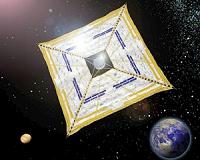 |
Denver CO (SPX) Jul 07, 2010 The Orion crew exploration vehicle has successfully completed the Phase 1 Safety Review of NASA's Human Rating Requirements for space exploration in low Earth orbit and beyond. The NASA/Lockheed Martin Orion team earned the approval from NASA's Constellation Safety and Engineering Review Panel (CSERP) upon completion of the review, an essential requirement for the Orion program to move forward to the Critical Design Review and Phase 2 Safety Review. The safety review process is a rigorous and exhaustive look at the design and operational concepts to assure that all requirements have been adequately met. System safety requirements address potentially catastrophic failures that could result in loss of crew or loss of mission during launch, ascent to orbit, approach and docking to the International Space Station, re-entry, landing, and recovery operations. Thoroughly reviewing spacecraft designs and operations for possible causes of such catastrophic failures, and designing appropriate mitigations for them, is a critical part of NASA's human rating program. "Completing this significant safety review puts Orion well down the road in satisfying the requirements to minimize the nation's gap in human space flight," said Paul Benfield, Lockheed Martin Integrated Reliability and Safety Manager for the Orion Program. "NASA's current human rating standards include stringent requirements and thorough procedures developed from the best practices of NASA's past 50 years of human spaceflight." Benfield noted that human rating a vehicle for beyond low Earth orbit (LEO) is particularly challenging given the greater autonomy of such a mission, the extended mission durations, and increased time to return to Earth. This Phase 1 Safety milestone covers the requirements for Orion missions in LEO as well as sortie missions to the moon. The design enables a six-month on-orbit duration which is vital to assure return capability of the space station crew, as well as support autonomous lunar orbit operations. This long duration design far exceeds the one- to two-week capabilities offered by other potential providers. "Human rating a spacecraft is not a feature you can just simply add on once the vehicle is designed," explained Benfield. "It is a process that requires endurance and attention to detail to ensure that safety is driven into every aspect of the vehicle design and operations from the beginning. Optimal safety and reliability is strategically and systematically incorporated into the vehicle from day one, concurrent with critical trade decisions considering vehicle mass and cost." The Orion crew exploration vehicle is at the peak of its development phase, which has spurred several new technologies and innovations in composites, structures, avionics and thermal protection systems. The spacecraft is on schedule to complete the Critical Design Review in 2011 which will put Orion on the path for flight to low Earth orbit as early as 2013, provided appropriate funding is approved in the near future.
Share This Article With Planet Earth
Related Links Lockheed Martin Space Tourism, Space Transport and Space Exploration News
 Solar Sailing: Pathway To The Stars
Solar Sailing: Pathway To The StarsPasadena CA (SPX) Jul 05, 2010 When it comes to space travel, no propulsion method surpasses the sheer romance of solar sailing, literally flight on light. We invite you to learn of the exciting advances in the field at a free public event on July 21, 2010 - "Solar Sailing: Pathway to the Stars." New York City College of Technology (City Tech) is hosting an International Solar Sailing Symposium from July 20-22 in Brookl ... read more |
|
| The content herein, unless otherwise known to be public domain, are Copyright 1995-2010 - SpaceDaily. AFP and UPI Wire Stories are copyright Agence France-Presse and United Press International. ESA Portal Reports are copyright European Space Agency. All NASA sourced material is public domain. Additional copyrights may apply in whole or part to other bona fide parties. Advertising does not imply endorsement,agreement or approval of any opinions, statements or information provided by SpaceDaily on any Web page published or hosted by SpaceDaily. Privacy Statement |